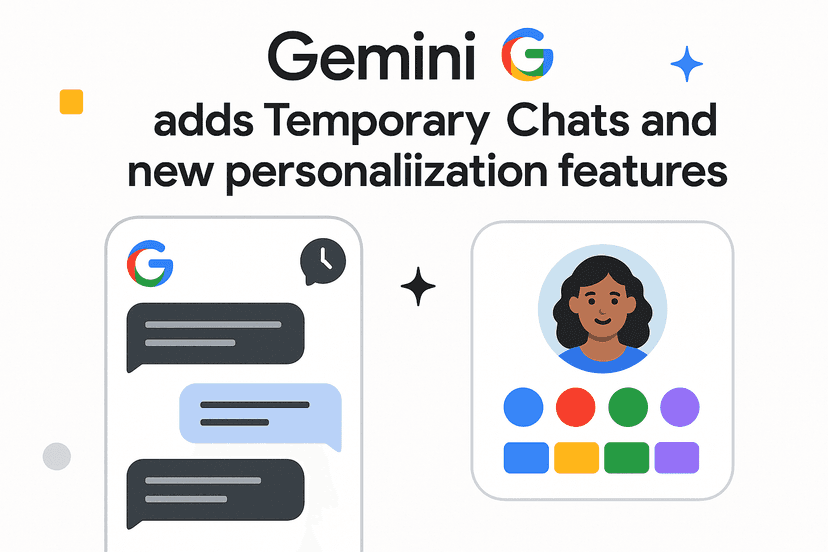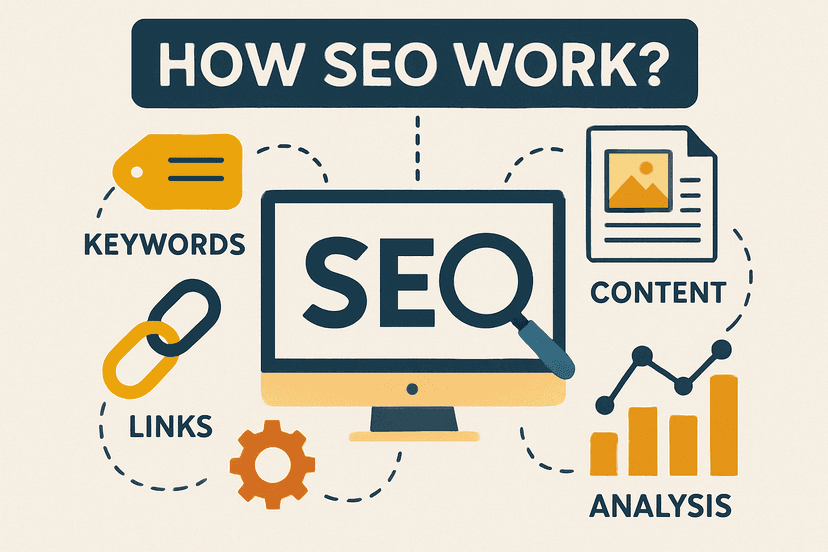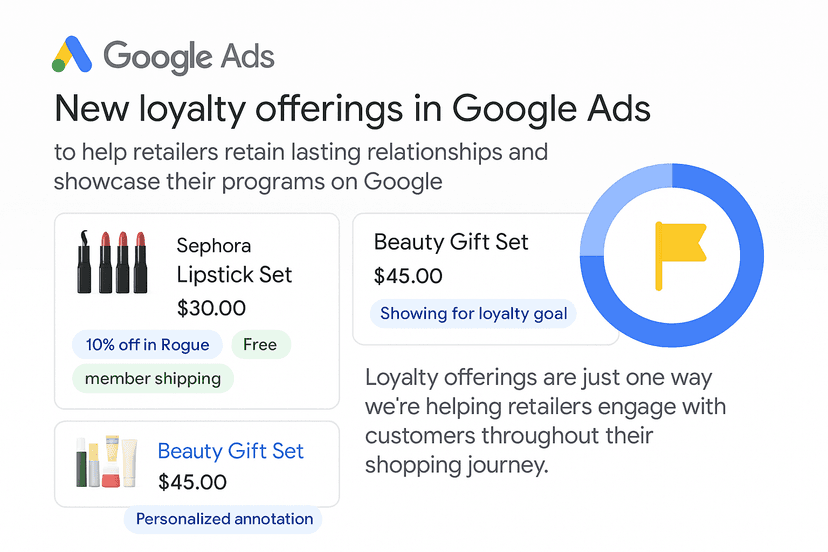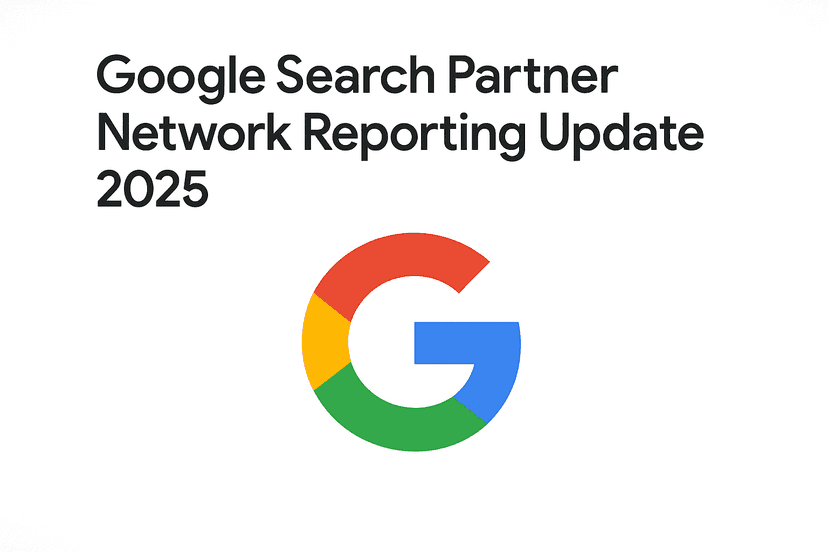Introduction to Google AI
Google AI represents one of the most ambitious and far-reaching artificial intelligence initiatives in the world today. Since its formation, Google has been at the forefront of AI research and implementation, gradually integrating intelligent systems into virtually every aspect of its product ecosystem. What began as simple algorithms to improve search results has evolved into sophisticated machine learning systems that can translate languages, recognize images, drive cars, compose music, and even engage in natural conversations with humans.
The significance of Google AI extends far beyond the company’s own products. As one of the largest technology companies globally, Google’s AI innovations set industry standards and influence how artificial intelligence is developed and deployed across sectors. From healthcare to transportation, education to entertainment, Google’s AI technologies are reshaping how businesses operate and how individuals interact with technology.
Google’s commitment to artificial intelligence is evident in its substantial investments in research and development. The company maintains dedicated AI research centers worldwide, employs thousands of AI specialists, and regularly publishes breakthrough research through platforms like Google AI and DeepMind. This open approach to sharing knowledge has accelerated the advancement of AI as a field while simultaneously establishing Google as a thought leader.
For businesses and marketers, understanding Google AI is no longer optional—it’s essential. As AI increasingly powers the digital platforms that connect businesses with customers, familiarity with Google’s AI capabilities and limitations becomes crucial for effective strategy development. Whether it’s leveraging AI for advertising optimization, customer service automation, or content creation, Google’s artificial intelligence tools have become indispensable resources in the modern business landscape.
As we explore the evolution and impact of Google AI throughout this article, we’ll uncover how these technologies are reshaping digital marketing, examine the benefits and controversies surrounding AI-managed campaigns, and provide practical guidance for businesses looking to leverage Google’s AI capabilities effectively.
The History of Google AI
The story of Google AI begins much earlier than many might expect. While Google was founded in 1998 with its revolutionary PageRank algorithm (itself an early form of machine intelligence), the company’s formal journey into artificial intelligence accelerated in the mid-2000s.
Early Foundations (2001-2010)
Google’s first significant AI milestone came with the acquisition of Pyra Labs in 2003, which brought Blogger into Google’s portfolio and provided early insights into content analysis and recommendation systems. By 2006, Google had launched Google Translate, initially a statistical machine translation service that would later become one of the company’s most impressive AI showcases.
The company’s growing interest in AI became more apparent in 2010 with the introduction of Google Instant, which predicted search queries as users typed. This seemingly simple feature actually represented a complex predictive algorithm analyzing massive datasets in real-time—a harbinger of the AI-powered features to come.
The Deep Learning Revolution (2011-2015)
In 2011, Google established Google X (now X Development), a semi-secret research facility dedicated to developing “moonshot” technologies, many of which were AI-focused. This period marked Google’s transition from traditional machine learning approaches to deep learning, a shift that would fundamentally transform the company’s AI capabilities.
The acquisition of DeepMind in 2014 for approximately $500 million signaled Google’s serious commitment to advanced AI research. DeepMind, founded in 2010, had already established itself as a leader in reinforcement learning and neural networks. Under Google’s umbrella, DeepMind would go on to create AlphaGo, the AI system that defeated world champion Lee Sedol at the board game Go in 2016—a watershed moment in AI history.
The Assistant Era (2016-2019)
Google’s AI developments began reaching mainstream consumers more directly with the launch of Google Assistant in 2016. Unlike previous virtual assistants, Google Assistant leveraged the company’s advanced natural language processing capabilities to create more conversational and contextually aware interactions.
This period also saw the introduction of key machine learning frameworks like TensorFlow, which Google open-sourced in 2015. By sharing these powerful tools with the global developer community, Google simultaneously accelerated AI innovation while strengthening its position as an AI leader.
In 2018, Google demonstrated Duplex, an AI system capable of making phone calls to schedule appointments while sounding remarkably human. The demonstration sparked both amazement and ethical debates about AI disclosure and the future of human-AI interaction.
The Multimodal AI Phase (2020-Present)
Recent years have witnessed Google’s expansion into multimodal AI—systems that can process and generate different types of data, including text, images, audio, and video. The 2020 introduction of BERT (Bidirectional Encoder Representations from Transformers) revolutionized Google Search by better understanding the context and nuance of search queries.
In 2021, Google announced LaMDA (Language Model for Dialogue Applications), a sophisticated conversational AI system designed to engage in open-ended conversations. This was followed by the introduction of Pathways Language Model (PaLM) in 2022, which demonstrated remarkable capabilities in language understanding and generation across multiple languages.
Google’s 2023 announcements at Google I/O showcased the company’s continued innovation, introducing new generative AI features across its product lineup and unveiling more ambitious plans for AI integration in search, creativity tools, and business applications.
Throughout this evolution, Google AI has transformed from a specialized research interest into the central driving force behind virtually all of Google’s products and services. This progression reflects the company’s long-term vision of AI as not just a feature but the fundamental technology reshaping how humans interact with information and digital systems.
Core Technologies Powering Google AI
Google’s artificial intelligence ecosystem is built upon several foundational technologies that work together to create increasingly sophisticated systems. Understanding these core components provides insight into how Google has achieved its remarkable AI capabilities.
Machine Learning Infrastructure
At the foundation of Google AI is a massive computational infrastructure designed specifically for machine learning workloads. This includes:
Tensor Processing Units (TPUs): Google developed these custom application-specific integrated circuits (ASICs) specifically for neural network machine learning. First revealed in 2016, TPUs provide significant performance and energy efficiency advantages over traditional GPUs for AI workloads. Google now offers TPU access through Google Cloud, enabling businesses to leverage this specialized hardware.
Distributed Computing Systems: Google’s distributed computing architecture allows AI models to be trained across thousands of machines simultaneously. This parallelization dramatically reduces training time for large models from months to days or even hours.
TensorFlow: This open-source machine learning library, developed by Google, has become one of the most widely used AI frameworks globally. TensorFlow provides tools for building and deploying machine learning models across various platforms, from cloud servers to mobile devices.
Natural Language Processing
Google’s natural language processing (NLP) capabilities represent some of its most impressive AI achievements:
BERT (Bidirectional Encoder Representations from Transformers): Introduced in 2018, BERT transformed Google’s ability to understand search queries by considering the context of words in relation to all surrounding words, not just those that come before. This bidirectional approach allows for much more nuanced language understanding.
LaMDA (Language Model for Dialogue Applications): This conversational language model is designed specifically for dialogue, allowing it to engage in open-ended conversations on virtually any topic while maintaining context throughout extended interactions.
PaLM (Pathways Language Model): With 540 billion parameters, PaLM represents one of Google’s largest language models. It demonstrates remarkable capabilities in reasoning, code generation, translation, and even understanding jokes—showing how Google’s language AI is approaching more human-like comprehension.
Multitask Unified Model (MUM): This technology can understand and generate language, as well as interpret images, allowing it to answer complex questions that might require both visual and textual understanding.
Computer Vision
Google’s computer vision technologies enable machines to “see” and interpret visual information:
Vision Transformer (ViT): This architecture applies transformer models (originally designed for language) to image recognition tasks, achieving state-of-the-art results while requiring less computational resources than previous approaches.
Google Lens: This application demonstrates Google’s computer vision capabilities in a consumer product, allowing users to search what they see through their smartphone cameras, from identifying plants to translating text in real-time.
MediaPipe: This framework enables developers to build machine learning solutions for processing video, audio, and time-series data, supporting applications from face detection to hand tracking and pose estimation.
Generative AI
Some of Google’s most recent and impressive AI advancements fall into the category of generative AI—systems that can create new content:
Imagen and Parti: These text-to-image models can generate photorealistic images from textual descriptions, demonstrating Google’s capabilities in multimodal AI that bridges language and visual creation.
MusicLM: This model can generate music from text descriptions, creating original compositions that match specific genres, moods, or even mimic the style of specific time periods.
Generative Language Models: Beyond conversation, Google’s language models can write code, compose emails, summarize long documents, and even create original creative content like poetry or stories.
Reinforcement Learning
Google has made significant advances in reinforcement learning, where AI systems learn through trial and error:
AlphaGo and AlphaFold: Developed by Google’s DeepMind, these systems showcase the power of reinforcement learning combined with deep neural networks. While AlphaGo mastered the complex game of Go, AlphaFold made breakthroughs in predicting protein structures—demonstrating how similar AI approaches can solve vastly different problems.
Reinforcement Learning from Human Feedback (RLHF): This approach, used in systems like LaMDA, combines reinforcement learning with human evaluations to align AI behavior with human preferences and values.
These core technologies don’t operate in isolation; rather, they form an interconnected ecosystem that powers Google AI’s increasingly sophisticated capabilities. As these foundational technologies continue to advance, they enable new applications across Google’s product portfolio, from search algorithms to creative tools to automated advertising systems.
Google AI’s Impact on Search
Search has always been at the heart of Google’s business, and artificial intelligence has fundamentally transformed how the company’s search engine operates. This evolution represents perhaps the most significant and far-reaching application of Google AI, affecting billions of daily searches worldwide.
From Keywords to Understanding
Google’s search engine began with a relatively straightforward approach: matching keywords in queries to keywords on web pages, with PageRank determining relevance. While revolutionary for its time, this approach had clear limitations in understanding user intent and context.
The integration of AI into Google Search has progressively moved the engine from keyword matching toward genuine understanding:
RankBrain (2015): Google’s first major AI component in its search algorithm, RankBrain helped interpret never-before-seen queries by making associations between words with similar meanings. This was particularly valuable for the approximately 15% of daily searches that Google had never encountered before.
BERT (2019): Described by Google as “the biggest leap forward in the past five years,” BERT’s implementation allowed Google to better understand the nuance and context of words in search queries. For example, BERT could distinguish between “can you get medicine for someone pharmacy” (asking if you can pick up someone else’s prescription) versus slightly different word arrangements that change the meaning entirely.
MUM (2021): The Multitask Unified Model represented another quantum leap, being 1,000 times more powerful than BERT and capable of understanding information across 75 different languages and multiple formats (text, images, video). MUM can connect information in ways previously impossible, such as answering complex queries like “I’ve hiked Mt. Adams and now want to hike Mt. Fuji next fall, what should I do differently to prepare?”
The Evolution of Search Results
As Google AI has become more sophisticated, the search results page has evolved dramatically:
Featured Snippets: AI identifies the most relevant portion of a webpage that directly answers a user’s query, displaying it prominently at the top of results. This required advanced natural language processing to extract and present just the right information.
Knowledge Panels: For entities like people, places, and organizations, Google AI aggregates information from multiple sources to create comprehensive knowledge panels, requiring sophisticated entity recognition and information synthesis.
Rich Results: Search results now include images, videos, maps, and interactive elements, with AI determining when these enhanced results would benefit the user based on query intent.
Predictive Search: Google can now anticipate user needs before they even complete their queries, with features like Google Discover using AI to recommend content based on past search history and context.
Search Generative Experience (SGE)
In 2023, Google unveiled its most ambitious AI-powered search transformation yet: the Search Generative Experience. This new approach uses large language models to create AI-generated overviews that synthesize information from across the web, directly answering complex queries at the top of search results.
SGE represents a fundamental shift in search philosophy—from primarily directing users to the best sources to actively synthesizing and presenting information. Key features include:
AI Overviews: Generated summaries that directly answer queries by pulling information from multiple sources
Follow-up Questions: Contextually relevant suggestions that help users explore topics more deeply
Multimodal Capabilities: The ability to understand and generate both text and images in response to queries
Integrated Shopping Experiences: AI-powered shopping recommendations and comparisons
This evolution has sparked significant debate within the digital marketing community about the future of organic traffic, as AI-generated overviews potentially reduce clicks to source websites. Google has emphasized that attribution and links to sources remain critical components of SGE, but the long-term impact remains uncertain.
Implications for Businesses and SEO
Google AI’s transformation of search has profound implications for businesses and SEO professionals:
Intent Optimization: As Google gets better at understanding user intent, content must be created to address specific user needs rather than simply targeting keywords.
E-E-A-T Focus: Google’s emphasis on Experience, Expertise, Authoritativeness, and Trustworthiness has intensified with AI, as these signals help verify content quality.
Structured Data Importance: Implementing schema markup has become increasingly important to help Google AI understand content context and structure.
Conversational Content: As voice search and natural language queries grow, content that answers questions conversationally performs better.
Multimodal Strategy: With Google AI now understanding images, video, and audio alongside text, comprehensive content strategies must incorporate multiple media formats.
The integration of AI into Google Search represents both challenge and opportunity for businesses. While the rules of visibility continue to evolve, organizations that embrace Google’s AI-driven approach—creating comprehensive, authoritative content that genuinely addresses user needs—stand to benefit from improved visibility in this new search landscape.
Google AI Tools for Businesses
Google has developed an extensive ecosystem of AI-powered tools specifically designed for business applications. These tools leverage the company’s advanced AI capabilities while making them accessible to organizations of all sizes, often without requiring specialized technical expertise.
Google Workspace AI Integration
Google Workspace (formerly G Suite) has increasingly incorporated AI features to enhance productivity and collaboration:
Smart Compose and Smart Reply: These features in Gmail use predictive text technology to suggest phrases or entire responses as users type, saving time and improving communication efficiency.
Google Docs AI: Recent updates have introduced AI-powered writing assistance, including summary generation, style suggestions, and automated formatting. The “Help me write” feature can even generate entire drafts based on simple prompts.
Slides and Sheets Intelligence: AI features in these applications include automatic chart suggestions in Sheets based on data patterns and design recommendations in Slides for more effective presentations.
Meeting Enhancement in Google Meet: AI-powered features include noise cancellation, low-light enhancement, automatic captioning, and meeting summaries—all designed to improve virtual collaboration experiences.
Google Cloud AI Solutions
For enterprises requiring more advanced AI capabilities, Google Cloud offers sophisticated tools and infrastructure:
Vertex AI: This unified platform allows organizations to build, deploy, and scale machine learning models with less code and fewer specialists required. It brings together Google’s AutoML and AI Platform into a unified API, client library, and user interface.
Document AI: This tool extracts structured data from unstructured documents, automating document processing workflows for invoices, receipts, forms, and other business documents.
Contact Center AI: This solution enhances customer service operations with virtual agents, agent assistance, and conversation analytics, allowing businesses to provide 24/7 support while reducing operational costs.
Retail AI: Custom-built for retail businesses, these tools include recommendation systems, vision product search, and demand forecasting to enhance customer experiences and operational efficiency.
Healthcare Natural Language API: Specialized for healthcare organizations, this tool extracts medical knowledge from unstructured text, helping with clinical documentation and research.
Marketing and Advertising AI Tools
Google offers numerous AI-powered tools specifically for marketing and advertising professionals:
Performance Max Campaigns: This campaign type uses Google’s machine learning to automatically optimize ad performance across all Google platforms, including Search, Display, YouTube, Gmail, and Maps.
Smart Bidding: These automated bid strategies use machine learning to optimize for conversions or conversion value in each auction, considering a wide range of signals that would be impossible to manage manually.
Responsive Search Ads: This format automatically tests different combinations of headlines and descriptions to determine which perform best, then adjusts serving accordingly.
Google Analytics 4: The newest version of Google Analytics uses machine learning to identify trends, predict future customer actions, and provide automated insights that would be difficult to discover manually.
Value-based Bidding: This advanced feature allows advertisers to optimize campaigns based on the predicted value of conversions rather than just conversion volume.
Developer-Focused AI Tools
For businesses looking to build custom AI solutions, Google provides powerful developer tools:
TensorFlow: Google’s open-source machine learning framework supports everything from basic model development to advanced neural network design and deployment.
Cloud Vision API: This tool enables developers to incorporate image recognition capabilities into applications, including label detection, face and landmark detection, optical character recognition, and explicit content detection.
Natural Language API: Developers can use this API to extract entities, analyze sentiment, and understand the structure of text without having to build their own natural language processing systems.
Speech-to-Text and Text-to-Speech APIs: These tools convert audio to text and vice versa with high accuracy across multiple languages, enabling voice-based applications and services.
Translation API: This service provides programmatic access to Google’s neural machine translation capabilities, supporting content localization across more than 100 languages.
Small Business AI Solutions
Recognizing that not all businesses have the resources for complex AI implementations, Google has developed several accessible AI tools for small businesses:
Google Business Profile AI Features: AI helps optimize business profiles by suggesting attributes, photos, and information to add based on business type and customer searches.
Google Ads Smart Campaigns: Designed specifically for small businesses, these simplified campaigns use AI to automatically create and optimize ads across Google properties with minimal input required.
Merchant Center Intelligence: For e-commerce businesses, AI tools help optimize product listings, identify opportunities, and predict demand patterns.
Local Campaign Automation: AI optimizes ad delivery to drive visits to physical business locations based on proximity, search intent, and other signals.
The breadth and depth of Google’s business-focused AI tools continue to expand rapidly, with new features and capabilities regularly introduced. These tools represent a significant competitive advantage for businesses that effectively leverage them, automating routine tasks while providing insights and capabilities that would be impossible through manual methods alone.
Google AI in Digital Marketing
Digital marketing has been fundamentally transformed by Google AI, with artificial intelligence now influencing virtually every aspect of how businesses connect with potential customers online. This transformation has created both new opportunities and challenges for marketers.
Automated Campaign Management
Google AI has progressively automated many aspects of advertising campaign management:
Smart Campaigns: Originally introduced for small businesses, these highly automated campaigns require minimal setup, with Google AI handling targeting, bidding, and creative optimization based on the advertiser’s goals.
Performance Max: This campaign type represents Google’s most advanced AI-driven approach, automatically optimizing performance across all Google ad inventory (Search, Display, YouTube, Gmail, Maps, and Discover) from a single campaign.
Target ROAS and Target CPA Bidding: These automated bidding strategies use machine learning to predict the likelihood of conversion for each auction and adjust bids accordingly, optimizing toward specific return on ad spend or cost per acquisition goals.
Budget Optimization: Google AI automatically distributes budget across campaigns based on performance and opportunity, shifting spend to where it can generate the best results.
The level of automation has increased steadily, with each new iteration requiring less human intervention while promising improved performance. This progression culminated in Google’s 2023 announcement of “agentic AI” for advertising—AI systems that can take independent actions to optimize campaigns without requiring explicit approval for each change.
AI-Powered Audience Targeting
Audience targeting has been revolutionized by Google’s machine learning capabilities:
Predictive Audiences: Google AI can now identify users who are likely to take specific actions (like making a purchase) based on behavioral patterns, even if they’ve never visited an advertiser’s site before.
Similar Audiences: By analyzing existing customer data, Google AI identifies patterns and finds new users who share characteristics with current high-value customers.
In-market Audiences: AI identifies users actively researching products or services in specific categories based on their search behavior and website visits.
Customer Match Enhancement: While advertisers provide the initial customer list, Google AI enhances targeting by finding the optimal times and placements to reach these customers.
Smart Targeting for Video: For YouTube campaigns, Google AI automatically optimizes audience targeting based on campaign performance data, continuously refining who sees video advertisements.
These targeting capabilities enable marketers to reach relevant audiences with unprecedented precision while respecting privacy by focusing on patterns and interests rather than individual identity.
Creative Optimization and Generation
Google AI has made significant inroads into creative aspects of digital marketing:
Responsive Search Ads: These ads automatically test different combinations of headlines and descriptions, with machine learning determining which combinations perform best for different queries and users.
Responsive Display Ads: Advertisers provide images, headlines, descriptions, and logos, and Google AI automatically creates thousands of ad variations optimized for each placement and user.
Auto-created Assets: Google can now automatically generate additional headlines and descriptions based on website content and existing ads, expanding testing opportunities without additional creative work.
Dynamic Search Ads: These ads automatically generate headlines based on search queries and landing page content, ensuring highly relevant messaging without manual creation of all possible variations.
Video Creation Tools: Emerging AI tools from Google can transform static images and text into video advertisements, addressing the growing demand for video content without requiring professional production resources.
In 2023, Google announced even more advanced generative AI capabilities for ad creative, including the ability to create product imagery variations from a single product photo and expanded text generation capabilities for ad copy.
Measurement and Analytics Intelligence
Google Analytics and other measurement tools have been enhanced with AI capabilities:
Predictive Metrics: Google Analytics 4 offers AI-powered predictions for actions like churn probability and potential revenue, allowing marketers to take proactive action before events occur.
Automated Insights: AI continuously analyzes data to identify significant trends, anomalies, and opportunities that might otherwise go unnoticed.
Attribution Modeling: Google’s data-driven attribution uses machine learning to determine how much credit each marketing touchpoint should receive for conversions, providing a more accurate understanding of channel effectiveness.
Conversion Modeling: When direct measurement isn’t possible due to tracking limitations, Google AI estimates conversions based on observed data and historical patterns.
Intelligent Anomaly Detection: AI automatically flags unusual changes in performance metrics, allowing marketers to respond quickly to problems or opportunities.
Search and SEO Implications
Google AI has transformed organic search visibility in ways that directly impact digital marketing strategy:
Intent Matching: As Google’s understanding of search intent has improved through AI, content must now match the underlying user need rather than simply containing target keywords.
BERT and Natural Language: With Google better understanding natural language, content that answers questions conversationally often performs better than traditional keyword-optimized content.
AI-Generated Search Results: Features like featured snippets, knowledge panels, and the newer Search Generative Experience (SGE) extract and synthesize information directly in search results, changing how users interact with search results.
Page Experience Signals: Google AI incorporates user experience metrics like Core Web Vitals into ranking decisions, requiring marketers to focus on technical performance alongside content quality.
Voice Search Optimization: As AI-powered voice assistants handle more searches, optimization for conversational queries has become increasingly important.
The integration of AI across Google’s digital marketing ecosystem has created a landscape where successful strategies require both embracing automation and maintaining human oversight. Marketers who understand how to effectively collaborate with these AI systems—setting clear objectives, providing quality inputs, and interpreting outputs intelligently—can achieve significantly better results than either human-only or AI-only approaches.
The Controversial Shift to AI-Managed Campaigns
The evolution of Google AI in advertising has recently reached a pivotal and controversial milestone with the introduction of “agentic” AI systems designed to independently manage advertising campaigns. This shift represents a fundamental change in the relationship between advertisers and Google’s platforms, raising important questions about control, transparency, and the changing role of marketing professionals.
Google’s New AI Agents
At Google Marketing Live 2023, the company unveiled three new AI agents designed to take advertising automation to unprecedented levels:
Google Ads Agentic Expert: This system can make changes to campaigns without first requesting permission, including creating ad groups, adding keywords, implementing creative suggestions, fixing policy issues, and generating reports.
Google Analytics Data Expert: This tool automatically finds insights and trends, creating simple visualizations to help marketers understand performance patterns without requiring deep Analytics knowledge.
Marketing Advisor Chrome Extension: Set to launch later in 2023, this browser extension manages tasks across multiple platforms, including automated tagging, seasonal trend analysis, and problem diagnosis across different websites and content management systems.
These tools represent a significant leap beyond previous automation features. While earlier systems would recommend changes for human approval, these new agents can independently take action based on their assessment of what will improve performance.
Industry Reaction and Concerns
The announcement of these agentic AI tools prompted immediate questions and concerns from advertising professionals, centered around several key issues:
Control and Accountability: During a press session following the announcement, advertisers asked how AI-made changes would appear in Google Ads’ change history. Google executives couldn’t provide clear answers about whether changes would be attributed to the human account owner or specifically marked as AI-initiated. This lack of clarity raised concerns about accountability, especially for agencies that need to report actions to clients.
Transparency of AI Decision-Making: The basis on which AI agents make decisions remains somewhat opaque. While Google has indicated that the systems follow advertiser-set guidelines and objectives, the specific factors influencing individual decisions are not always clear to users.
The “Googlification” of Support: Some attendees directly questioned whether this automation trend was leading toward eliminating human support options. One attendee noted, “We’ve seen the ‘googlification’ of the Google help desk. Getting to a human is hard. This seems like it’s going down the path of replacing that.” Google representatives assured users that human support would remain available.
Content Authenticity and Labeling: With the introduction of AI-generated creative content, questions arose about disclosure and transparency. Unlike some platforms that visibly label AI-generated content, Google indicated it was taking a different approach: “All of our images are watermarked with metadata and SynthID so generated content can be identified. At this time, we’re not labeling ads with any sort of identification.”
The Control-Convenience Tradeoff
This controversial shift highlights a fundamental tension in digital advertising automation:
Benefits of AI Management:
- Reduced time investment for campaign management
- Continuous optimization beyond business hours
- Access to sophisticated optimization techniques
- Ability to manage more complex campaign structures
- Faster implementation of changes across large accounts
Costs of Reduced Human Control:
- Less transparency into specific optimization decisions
- Potential difficulty explaining changes to stakeholders
- Concerns about AI alignment with business objectives beyond measurable metrics
- Questions about differentiation when competitors use similar AI systems
- Professional identity concerns for PPC specialists and digital marketers
For many marketing professionals, these agentic AI tools represent both an opportunity and a threat. While they may improve performance and reduce tedious work, they also potentially diminish the strategic control that has long been central to the digital marketer’s role.
Performance Claims and Context
Google has shared impressive performance data for its AI-enhanced advertising tools:
- Products with AI-generated images reportedly saw a “remarkable 20% increase on return on ad spend” compared to standard listings
- “Advertiser adoption of Google AI for generating creative increased by 2500%” over the past year
These statistics suggest strong results and rapid adoption. However, they should be considered in the context of Google’s business incentives. Greater automation potentially increases ad spend by reducing the friction and expertise required to run campaigns, benefiting Google’s revenue even if individual advertiser results vary.
Industry Context and Competitive Pressure
Google’s aggressive push toward AI-managed campaigns comes amid significant competitive and industry pressures:
- The growth of TikTok as an advertising platform has created new competition for digital ad dollars
- Apple’s privacy changes have impacted targeting capabilities across the industry
- Economic uncertainty has led to more scrutiny of marketing budgets
- The rise of generative AI has created user expectations for more automated creative processes
Google says marketers spend “10 hours or more every week creating visual content”—a pain point these new tools directly address. By automating more aspects of campaign management, Google aims to maintain its position as the most accessible and effective digital advertising platform.
Strategic Implications for Marketers
The shift toward AI-managed campaigns necessitates strategic adaptations from marketing professionals:
Establishing AI Guardrails: Organizations should develop clear protocols for AI-driven campaign changes, including approval processes for significant modifications and documentation requirements.
Change Tracking Systems: Until Google provides clearer attribution of AI-initiated changes, marketers should implement backup documentation processes, especially for agency-client relationships where detailed reporting is expected.
API Integration Planning: With Google developing a “generative creative API,” marketing teams should assess how this might impact existing tools, workflow automation, and reporting systems.
Skill Evolution: Marketing professionals will likely need to shift focus from tactical campaign management to strategic oversight, creative direction, and business alignment—areas where human judgment remains essential.
The controversial introduction of agentic AI for campaign management represents a watershed moment in digital marketing. While previous automation features enhanced human capabilities, these new tools begin to replace human decision-making in significant areas of campaign management. This evolution raises profound questions about the future relationship between marketers, platforms, and artificial intelligence systems that will likely shape the industry for years to come.
Google AI in Content Creation
Content creation has traditionally been considered a deeply human creative process, requiring understanding of audience needs, brand voice, and marketing objectives. However, Google AI has made remarkable inroads into this domain, offering tools that can generate, enhance, and optimize various forms of content. This capability has significant implications for marketers, content creators, and businesses of all sizes.
Text Generation Capabilities
Google’s text generation AI has evolved dramatically in recent years, with capabilities now extending across multiple content formats:
Marketing Copy Generation: Google’s AI can now generate ad headlines, descriptions, and even extended marketing copy based on minimal inputs such as product details or campaign objectives.
Email Content Creation: The “Help me write” feature in Gmail can draft entire emails from simple prompts, maintaining appropriate tone and including relevant details.
Blog and Article Drafting: While not yet available in a standalone consumer product, Google has demonstrated AI systems capable of drafting blog posts, articles, and other long-form content based on topic specifications.
Product Descriptions: For e-commerce applications, Google AI can generate unique product descriptions from basic product details, helping merchants scale content creation for large catalogs.
Social Media Content: AI tools can suggest social media posts, generate captions for images, and even create content calendars based on business objectives and audience preferences.
The quality of this generated text has improved substantially, with recent systems able to maintain consistent tone, incorporate brand-specific language, and create content that reads increasingly like human-written material.
Visual Content Creation
Perhaps even more impressive has been Google’s advancement in AI-generated visual content:
Image Generation: Google’s Imagen and Parti models can create photorealistic images from text descriptions, allowing marketers to quickly generate custom visuals without photography or graphic design resources.
Video Creation: Emerging tools can transform static assets into dynamic video content, addressing the growing demand for video across marketing channels without requiring extensive production resources.
Image Editing and Enhancement: AI tools can automatically enhance product images, remove backgrounds, adjust lighting, and even modify images to fit different aspect ratios and formats.
“Outpainting” Technology: This innovative capability can expand existing visual content for different screen sizes and formats, filling in details consistently with the original image’s style and content.
Design Assistance: For presentations and marketing materials, AI can suggest layouts, color schemes, and design elements based on content and brand guidelines.
At Google Marketing Live 2023, the company showcased how these visual AI tools integrate directly with advertising platforms, allowing marketers to generate multiple creative variations from minimal inputs.
Multilingual Content Capabilities
Google’s AI language capabilities extend across linguistic boundaries:
Neural Machine Translation: Google’s translation technology now approaches human-level quality for many language pairs, enabling marketers to efficiently create content for global audiences.
Localization Assistance: Beyond direct translation, AI can suggest culturally appropriate modifications for different markets, helping content resonate with local audiences.
Multilingual Content Generation: Rather than translating existing content, Google’s advanced language models can generate original content directly in multiple languages based on the same brief or specifications.
Cross-Language Research: AI can analyze content performance across languages, identifying successful approaches that can be adapted for different markets.
These capabilities are particularly valuable for global brands and businesses expanding into new markets, reducing the resource barriers to effective multilingual content strategies.
Content Optimization Through AI
Beyond creation, Google AI offers powerful tools for optimizing content performance:
SEO Enhancement: AI can analyze content against search intent signals, suggesting improvements to better align with user needs and Google’s ranking factors.
Readability Analysis: Automated tools assess content clarity, reading level, and structure, recommending changes to improve comprehension and engagement.
Sentiment Analysis: AI evaluates the emotional tone of content, helping ensure alignment with brand values and campaign objectives.
A/B Testing Automation: AI systems can generate multiple content variations and automatically optimize based on performance data, accelerating the improvement cycle.
Performance Prediction: Advanced models can predict how content will perform before publication based on historical data and content characteristics, allowing for pre-emptive optimization.
These optimization capabilities help ensure that content not only exists but effectively achieves marketing objectives, creating a feedback loop that continuously improves content strategy.
Ethical and Strategic Considerations
The rapid advancement






